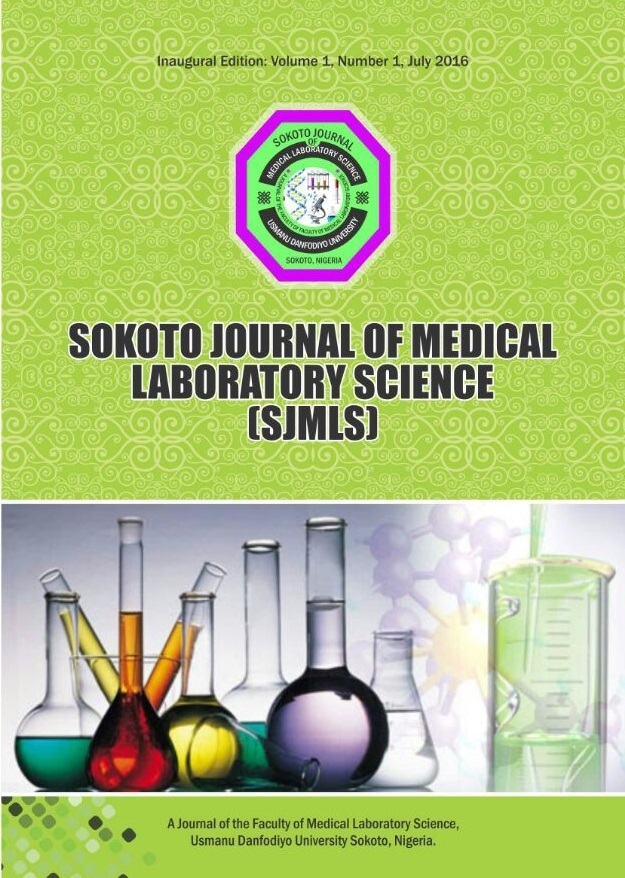Association Between Malondialdehyde and Glomerular Filtration Rate Among Patients Attending National Orthopaedic Hospital Dala- Kano, Nigeria
Keywords:
Creatinine, eGFR, Malondialdehyde and KidneyAbstract
Estimated glomerular filtration rate is a direct measure of renal function. Malondialdehyde estimations can be used as a reliable tool to assess oxidative stress levels and finding its relationships with different disease patterns. This study is aimed at correlating malondialdehyde and eGFR as an index of lipid peroxidation induced kidney damage. A total of sixty (60) consenting subjects of both gender between the ages of 20 to 80 years were recruited. Kinetic Jaffe’s method was employed for the estimation of creatinine. Estimated GFR was calculated using MDRD study equation. Malondialdehyde concentration was determined according to thiobarbituric acid reactive substances. Correlation coefficient (r=0.334) was observed between MDA (0.36±0.31 nmol /ml) and eGFR (175±52.10 ml/min/1.73m2) among the studied subjects. Mean MDA was higher in males (0.40±0.35 nmol /ml) than in females (0.29±0.22 nmol /ml), while eGFR was found to be higher in males (185.74±54.40) than in females (152.06±32.71). Correlation coefficient (r) = 0.335 and 0.662 was observed in both males and females respectively. Positive association exists between malondialdehyde and eGFR among orthopaedic patients which is found to be stronger in females then males. Glomerular filtrates may produce reactive oxygen species even without kidney damage but aggravated to produce lipid peroxidation as metabolic products accumulates due to kidney dysfunction.




